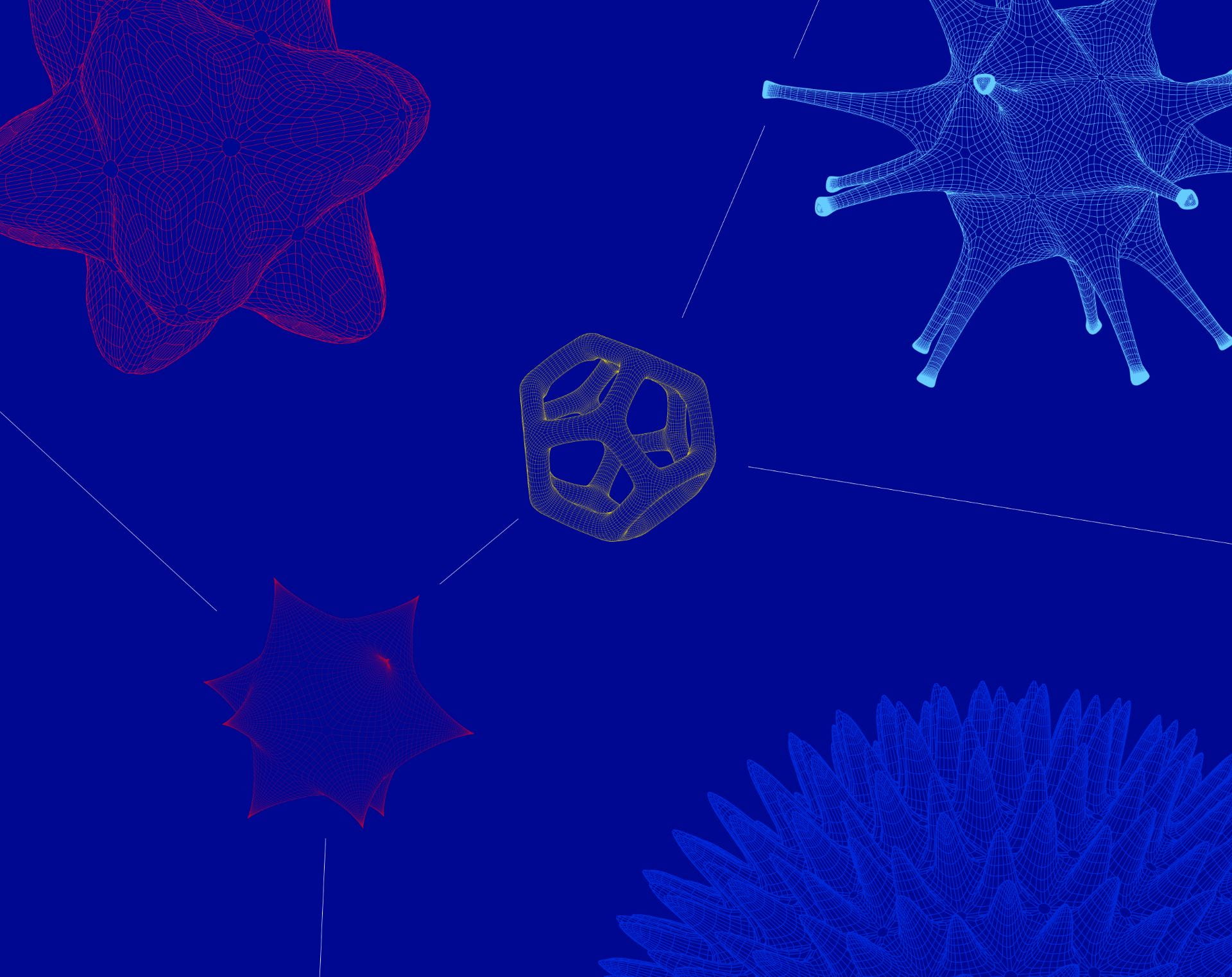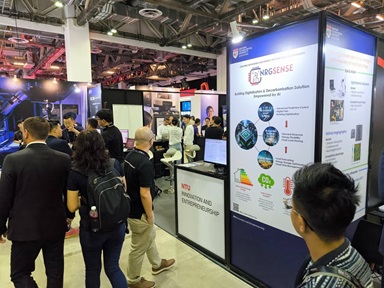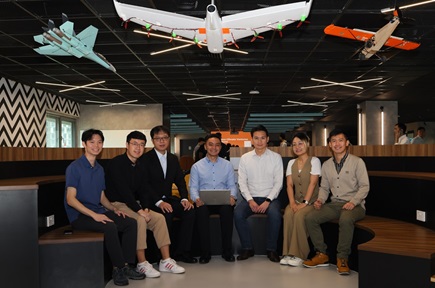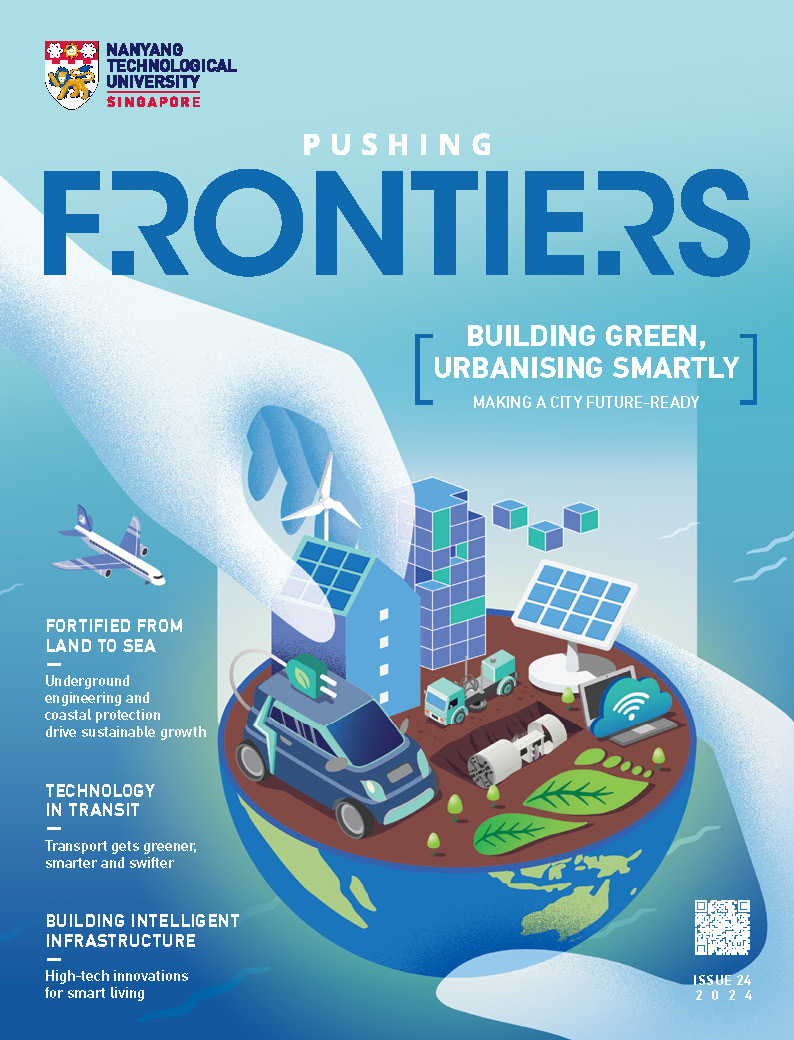Safer by design
Researchers at the NTU-Harvard School of Public Health Initiative for Sustainable Nanotechnology are helping nanotechnology reach its full potential by making the technology safer and more sustainable.
 Engineering safety into nanoparticle research.
Engineering safety into nanoparticle research.
You might not realise it, but you probably already use nanoparticles every day. Sunscreen, cosmetics and clothes are just some of the everyday items infused with nanoparticles to give them desirable features like even dispersion and antimicrobial properties. But what is perhaps even more surprising is the fact that the impact of these nanoparticles on human health and the environment is still not fully understood.
“Nanotechnology is enabling us to do things better, make materials stronger, diagnose diseases and so on,” says Assoc Prof Philip Demokritou, Director of Harvard University’s Centre for Nanotechnology and Nanotoxicology and Co-Director of the NTU-Harvard School of Public Health Initiative for Sustainable Nanotechnology (NTU-Harvard SusNano) at NTU.
“The challenge for nanomaterials, like all emerging materials, is that we need to make sure they are developed with safety and sustainability in mind right from the start,” Assoc Prof Demokritou, who is also a visiting professor in NTU’s School of Materials Science and Engineering, says.
This approach is at the heart of NTU-Harvard SusNano, an initiative under the NTU Institute for Health Technologies (HealthTech NTU). Established in late 2016, the programme brings interdisciplinary researchers from both Harvard and NTU together to make nanotechnology safer by design. “Our work spans across many different industries and applications that basically affect every one of us,” adds Assoc Prof Ng Kee Woei of NTU’s School of Materials Science and Engineering, who co-directs the programme alongside Assoc Prof Demokritou.
Tracking nanoparticles released from printers
One area that the NTU-Harvard SusNano researchers hope to make safer is workplaces. In a unique study of six different printing companies, Assoc Prof Ng and his team are investigating whether nanoparticles produced by laser printers have any health impact on the companies’ workers.
Laser printers and photocopiers use static electricity to cause finely powdered ink to stick to paper. Although it is widely known that laser printers emit nanoparticles in the process, whether those nanoparticles are absorbed by people working with printers is not known, much less whether the nanoparticles that are absorbed have any adverse health effects. While a few studies have been conducted on cells, the artificial conditions of the lab might not accurately reflect the conditions of real-world workplaces.
Instead, Assoc Prof Ng reached out to printing companies in Singapore and has recruited 20 volunteers to study the impact of printing-related nanoparticle exposure on health. “This study is unique because we directly sample the air at workplaces and collect biological samples from the workers there,” he explains.
Although the sample size is small and the study is still in its initial phase, early results show that a high density of printers and poor ventilation can contribute to elevated nanoparticle exposure, Assoc Prof Ng says. Lung function tests and biological assays on nasal lavage, blood and urine samples are carried out in the laboratory of Asst Prof Sanjay Chotirmall from the Lee Kong Chian School of Medicine, NTU’s joint medical school with Imperial College London. Early results have revealed that some individuals may be more sensitive to the printer-emitted particles than others.
The project, named SUNPrint, is endorsed by the Workplace Safety and Health Institute under Singapore’s Ministry of Manpower and aims to provide the first data point of real workplace exposure to nanoparticles in Singapore. “Our study will provide regulators a reference point as to whether nanoparticles are a concern for workplaces,” Assoc Prof Ng says. “We also hope to use our findings to develop protective regulatory guidelines and exposure control technologies.”
Absorbing fat, spinning off companies
Rather than releasing nanoparticles into the wild and then retroactively studying their effects, scientists should re-think their approach and make sure that their inventions are safe right at the beginning of the design process, Assoc Prof Ng continues. For instance, rather than more commonly used nanoparticles made of metal oxides, Assoc Prof Ng and his colleague, Assoc Prof Joachim Loo, are investigating nanofibres derived from a natural source: cellulose.
“Just from that perspective alone, we believe that the associated risk of consuming nanocellulose should be much lower than that of other nanomaterials already used in food products,” he says.
While studying the ability of nanocellulose to deliver nutraceuticals—substances with physiological benefits—in food, the researchers serendipitously discovered that the nanomaterial could also be used to block fat absorption, qualities that would allow consumers to literally have their cake and eat it, as Assoc Prof Demokritou notes.
The project, titled SusFood, has so far resulted not only in research papers and intellectual property but also a soon-to-be-launched spin-off company. An inherently interdisciplinary programme, SusFood also involves Prof Shirley Ho from NTU’s Wee Kim Wee School of Communication and Information, who studies the public perception of nano-enabled food and how science communication can bridge the gap.
Making a big impact with small particles
NTU-Harvard SusNano’s focus on food and agriculture is a deliberate one, Assoc Prof Demokritou says, given that food production affects the entire population and is a domain where sustainability is particularly important. “There are a lot of inefficiencies when it comes to delivering agricultural chemicals; for example, more than 80% of pesticides and fertilisers used are actually wasted. Not only is this wasteful, it can also pollute the environment,” he says.
“We are developing a product that focuses on how nanotechnology can be used to deliver agrichemicals in a more precise manner, and we have another project focused on smart food packaging material that is not only non-toxic and biodegradable but also incorporates antimicrobials and sensors.”
Apart from much-needed exposure guidelines and new nano-enabled products, the NTU-Harvard SusNano initiative is ultimately about changing the culture of nanotechnology research and raising awareness of the need to prioritise safety and sustainability, Assoc Prof Ng says.
“It’s not just about developing new materials and approaches under the existing environmental health and safety framework; you really need to bring all the different stakeholders to the table, from industry to policymakers and even the lay public,” adds Assoc Prof Demokritou. “That’s what we aim to achieve.”














/enri-thumbnails/careeropportunities1f0caf1c-a12d-479c-be7c-3c04e085c617.tmb-mega-menu.jpg?Culture=en&sfvrsn=d7261e3b_1)

/cradle-thumbnails/research-capabilities1516d0ba63aa44f0b4ee77a8c05263b2.tmb-mega-menu.jpg?Culture=en&sfvrsn=1bc94f8_1)

7e6fdc03-9018-4d08-9a98-8a21acbc37ba.tmb-mega-menu.jpg?Culture=en&sfvrsn=7deaf618_1)














.tmb-listing.jpg?Culture=en&sfvrsn=83fa0b1d_1)


-and-professor-hu-xiao-from-ntu-singapore.tmb-listing.jpg?Culture=en&sfvrsn=d0bcffec_1)
























